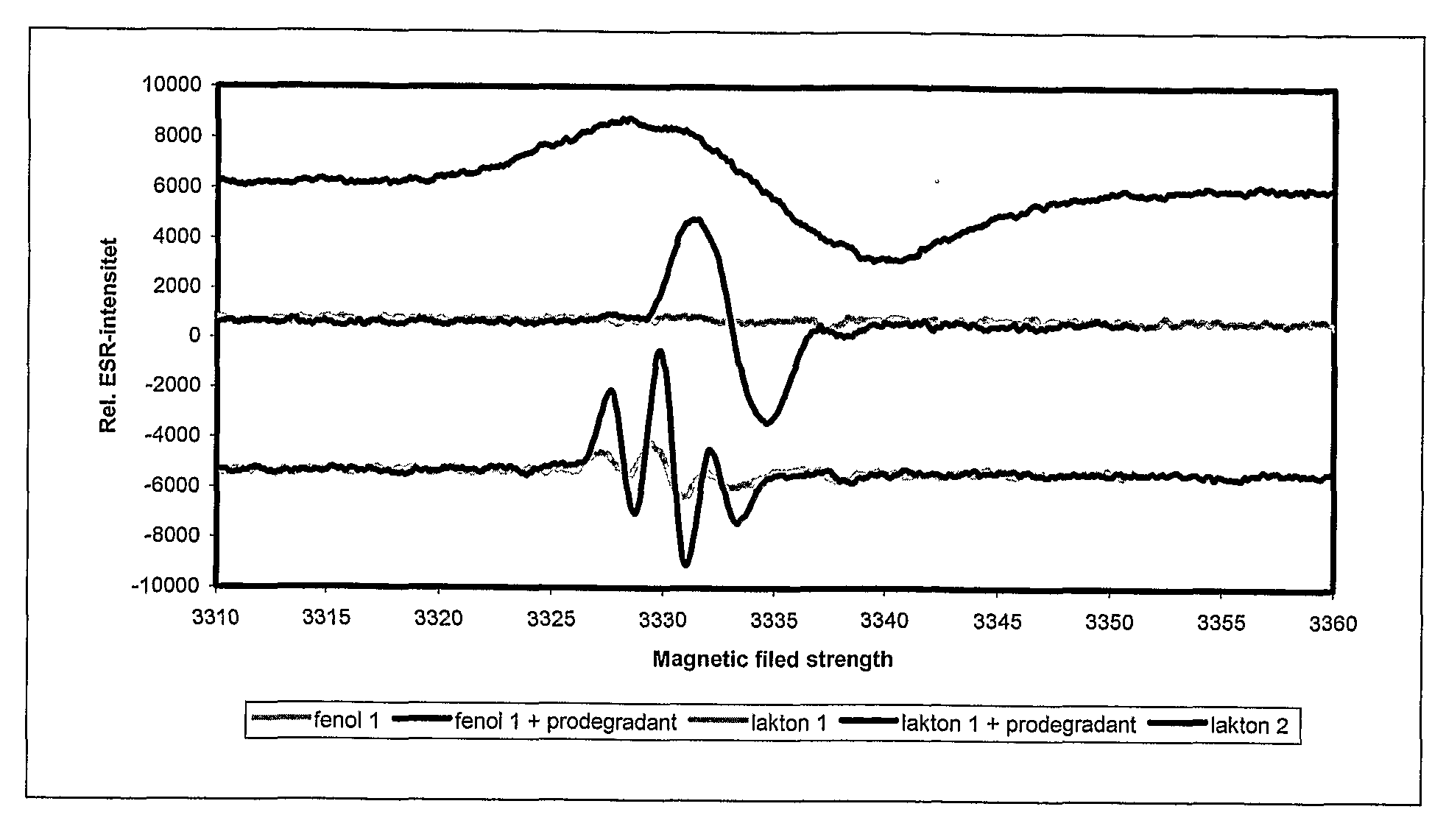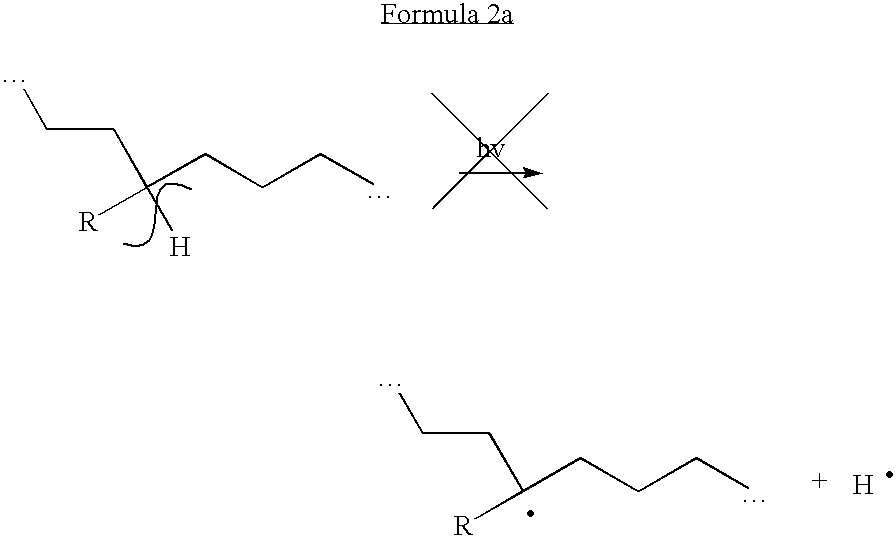Thermoplastic Material With Adjustable Useful Lifetime, Method For Their Manufacture And Products Thereof
a technology of thermoplastic materials and useful lifetimes, applied in the direction of chemical inhibitors, chemical instruments and processes, etc., can solve the problems of unsuitable plastic bags left in nature for years, the thermoplastic material from which the products are made is not well adapted to the particular application in question, and the products of thermoplastic materials are often considered environmentally unfriendly. , to achieve the effect of good properties
- Summary
- Abstract
- Description
- Claims
- Application Information
AI Technical Summary
Benefits of technology
Problems solved by technology
Method used
Image
Examples
example 1
Synthesis of Fat-Soluble Iron Containing Additive (Prodegradant)
[0086] a) The synthesis is performed in a heatable 5 litre glass reactor with two charging hoppers, a mechanically powered glass stirrer, a glass jacketed thermometer, a distillation cooler, an adjustable air inlet and a bottom valve. 2.180 kg (7.66 moles) of stearic acid is melted in the reactor. The air inlet rate is adjusted to about 200 ml air per minute and the temperature of the reactor is adjusted to 120° C. 600 g (2.22 moles) ferric (III) chloride hexahydrate is dissolved in 600 ml of water to produce about 900 ml aqueous ferric (III) chloride solution. Through one of the charging hoppers melted stearic acid is added to the ferric (III) chloride solution with a rate of 20 ml per minute. The addition of the aqueous ferric (III) chloride solution is adjusted so that the amount of distilled water and hydrogen chloride corresponds to the amount aqueous ferric (III) chloride solution supplied. Continuous supply of a...
example 2
Oxidizing Ability of Prodegradants with Respect to Iodide as Reduction Agent
[0093] The oxidizing ability of prodegradants with respect to a reduction agent was mainly measured as described by J. F. Rabek, Polymer Photodegradation; Mechanisms and Experimental Methods, Chapman and Hall, London (1995). 1% of the prodegradant was melted with 99% non-stabilized PP random copolymer and pressed to a thin film (20-40 μm). In addition iodide solutions of 10 g sodium iodide in 50 ml of concentrated acetic acid and 950 ml isopropanol were prepared. Approximately 220 mg PP film was heated with 4 ml of iodide solution until boiling started and thereafter cooled. The concentration of the by oxidation formed triiodide ion was photosectrometrically determined at 420 nm with a UV-VIS spectrophotometer with diode array detector (Hewlett-Packard HP 8453). The results are shown in table 8.
TABLE 8RelativeRelative oxidizing abilityoxidizing abilitymeasured as absorptionamount PPmeasured asat 420 nm [m...
example 3
Oxidizing Ability of Prodegradants with Respect to the Reduction Agent tris(2,4-ditert-butylphenyl)phosphite
[0095] The oxidizing ability of a prodegradant with respect to the reduction agent tris(2,4-ditert-butylphenyl)phosphite was determined by the following method:
[0096] 100 mg prodegradant was weighed into an NMR test tube and 20 mg tris(2,4-ditert-butylphenyl)phosphite was added. 1.0 g ortho-dichlorobenzene-d4 was thereafter added as a solvent. The NMR sample was remelted in air atmosphere and thereby sealed airtight. Thereafter the NMR sample was placed in a heat cabinet at 130 C for homogenization. A 31P-NMR-specter was recorded after about 1 hour by a Varian NMR-spectrometer (1H-NMR-resonance 300 MHz) at a constant sample temperature of 100° C. The 31P-NMR resonance of tris(2,4-ditert-butylphenyl)phosphite is easily seen at 132 ppm (reference H3PO4). After having recorded the first NMR spectre the NMR sample was placed in a heat cabinet at 150° C. for 20 hours. Then anothe...
PUM
| Property | Measurement | Unit |
|---|---|---|
| Temperature | aaaaa | aaaaa |
| Temperature | aaaaa | aaaaa |
| Temperature | aaaaa | aaaaa |
Abstract
Description
Claims
Application Information
 Login to View More
Login to View More - R&D
- Intellectual Property
- Life Sciences
- Materials
- Tech Scout
- Unparalleled Data Quality
- Higher Quality Content
- 60% Fewer Hallucinations
Browse by: Latest US Patents, China's latest patents, Technical Efficacy Thesaurus, Application Domain, Technology Topic, Popular Technical Reports.
© 2025 PatSnap. All rights reserved.Legal|Privacy policy|Modern Slavery Act Transparency Statement|Sitemap|About US| Contact US: help@patsnap.com



